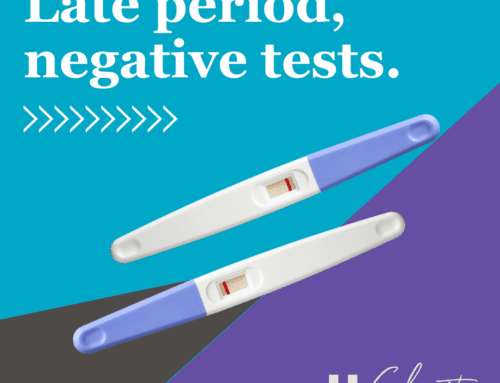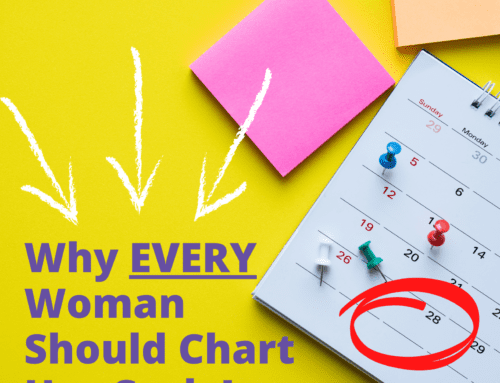
Isabelle had no clue she would get pregnant- she and her partner had been using birth control faithfully since they became sexually intimate. Isabelle had always struggled with intense PMS, so when the telltale signs of her period starting soon never came, she rushed to buy a pregnancy test…just in case. Even before her missed period, the plus sign on the test showed up quickly. She figured she would take the abortion pill but scheduled a pre-abortion appointment to get the information she needed first.
Thankfully, free early-obstetrical ultrasounds were included in her pre-abortion appointment. Because while Clarity’s nurses do not diagnose, her ultrasound did not appear quite like one would expect at nearly 6 weeks pregnant. Isabelle’s nurse figured she would get a second opinion from Clarity’s radiologists. After reading her images, the radiologists advised Isabelle to get to an emergency room asap- they thought her pregnancy may be ectopic…And they were right. Because of this ultrasound, she got the life-saving care she needed. If she had taken the abortion pills first, Isabelle may not have known that she had an ectopic pregnancy until it was likely too late.
Of course Isabelle is not a *real* client, Clarity is HIPAA compliant and privacy is super important to us. But this is a story we have seen play out over and over in our clinic. Ectopic pregnancy and miscarriage is way more common than you’d think. And we can’t tell you how many times a patient has come in insisting they are 5 weeks pregnant when an ultrasound shows them well past their first trimester. But Isabelle’s story, and others like it, teach us why ultrasounds are more important now than ever.
1. A positive pregnancy test isn’t all you really need
Just because a test is positive does not mean it is viable (growing as expected) or developing in the correct place. At Clarity, our pregnancy tests are 97%-99% accurate. However, a urine-based pregnancy test only indicates the pregnancy hormone hCG was detected. You need an ultrasound too, and sadly many abortion providers do not offer these to all of their patients…and especially not for free. When you think of an ultrasound, you likely think of a shirt hiked up and a Doppler on a big pregnancy belly. But early obstetrical ultrasounds are done vaginally in early pregnancy (even as early as 5 weeks) and give super clear images one may not get abdominally.
2. If your pregnancy is developing in the uterus
Like Isabelle’s, sometimes a pregnancy isn’t located in your uterus but in the Fallopian tubes or pelvic region outside of the uterus. This is called an ectopic pregnancy and requires immediate medical attention. Ectopic pregnancies are considered nonviable, meaning they likely do not have a chance of developing and surviving outside of the womb. They can be fatal if left untreated. It’s important to be aware of certain health conditions that could lead to abortion complications.
3. Your pregnancy’s viability
Early obstetrical ultrasounds determine if you need to terminate your pregnancy at all! According to the Mayo Clinic, 1 in 5 or up to 20% of pregnancies end naturally in miscarriage. It’s entirely possible to get a positive pregnancy test result but be about to miscarry or in the process of miscarrying. If you’ve miscarried, your body needs time to expel the pregnancy tissue and hormones.
4. How far along you are
While you may have a last menstrual period date, nothing is more accurate than an early obstetrical ultrasound to determine how far along you are. This is because every woman’s cycle is different and some women even continue to menstruate while in early stages of pregnancy!
5. The type of procedure you would be able to seek
For those considering abortion, the gestational age of your pregnancy will determine which type of abortion procedure you might be eligible for. The abortion pill, for example, is only effective in the first 10 weeks of pregnancy. For your safety, a medical abortion, also known as the abortion pill, should not be performed 10 weeks after the first day of your last menstrual period. The American College of Obstetricians and Gynecologists (ACOG) writes, “Clinicians should counsel patients that medication abortion failure rates, especially continuing pregnancy rates, increase as gestational age approaches 10 weeks (70 days).” In other words, the further along you get, the more likely it is that the abortion pill won’t work.. There are also a variety of surgical procedures to be aware of. It’s important to know what type you would be receiving.
6. The potential procedure cost (pending gestational age)
The abortion industry typically prices abortion procedures based on gestational age. The cost of abortion pills may vary from provider to provider or depend on your state (and the legality). If you want a surgical procedure or are past 10 weeks pregnant, these different procedures affect costs. Some abortion providers offer some types of procedures but not others. And if you are 10 weeks pregnant seeking a surgical abortion vs 13 weeks vs 20 weeks, the cost will vary.
Ultrasounds are vital, keep your body safe, and are free at Clarity! Book an appointment with us and get the confidence and clarity you need.
Sources:
-
https://www.mayoclinic.org/diseases-conditions/pregnancy-loss-miscarriage/symptoms-causes/syc-20354298
-
https://www.mayoclinic.org/diseases-conditions/pregnancy-loss-miscarriage/symptoms-causes/syc-20354298
-
https://www.accessdata.fda.gov/drugsatfda_docs/label/2016/020687s020lbl.pdf
-
https://www.bsideuforlife.org/why-you-need-an-ultrasound-before-an-abortion/
-
https://www.fda.gov/drugs/postmarket-drug-safety-information-patients-and-providers/information-about-mifepristone-medical-termination-pregnancy-through-ten-weeks-gestation
-
https://www.acog.org/













